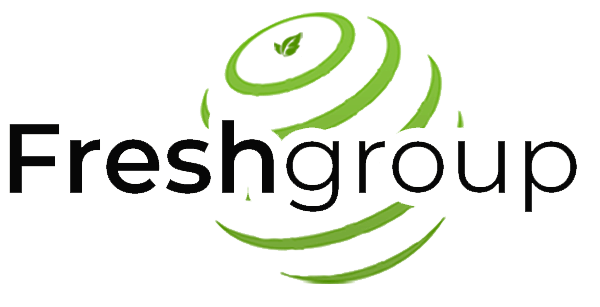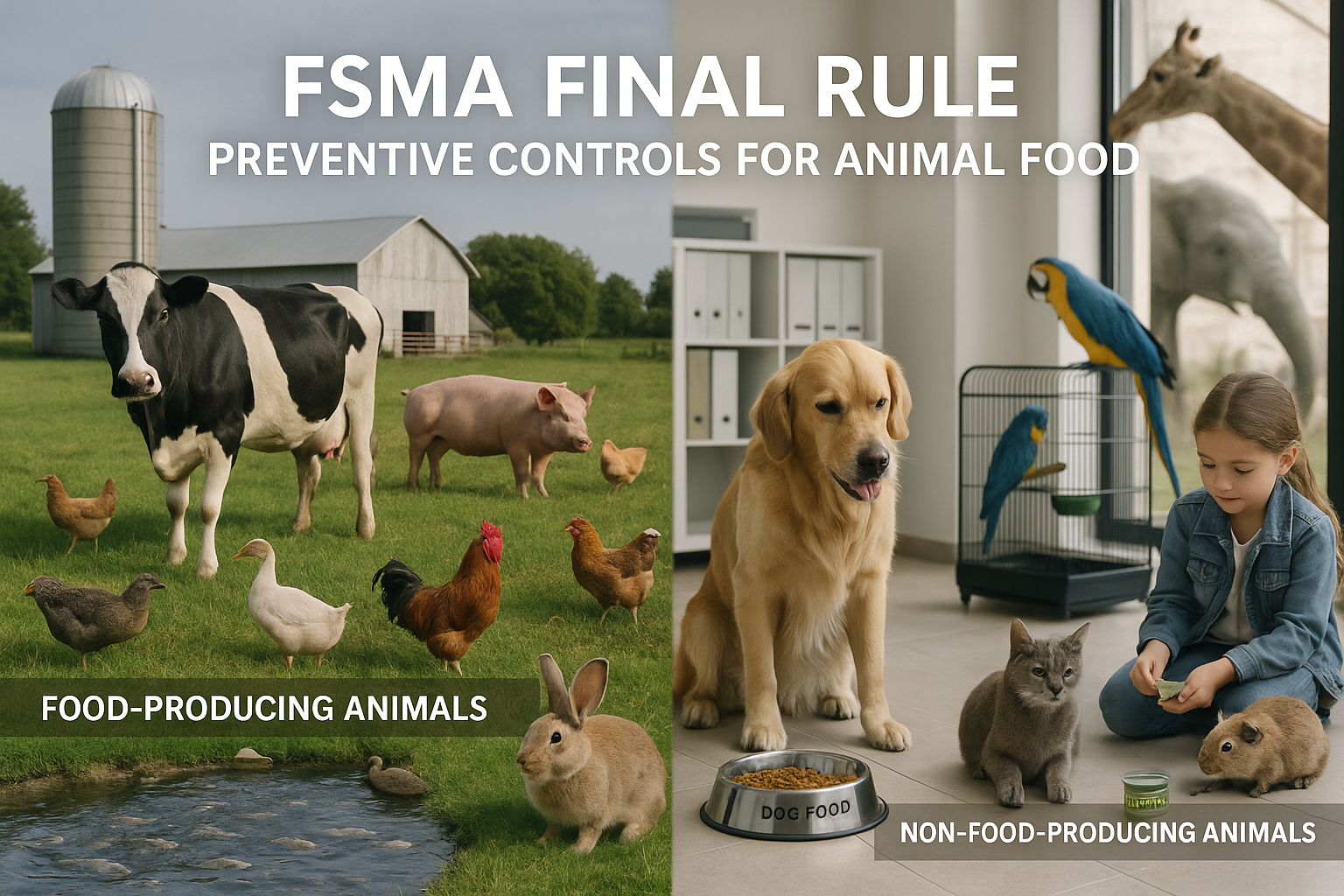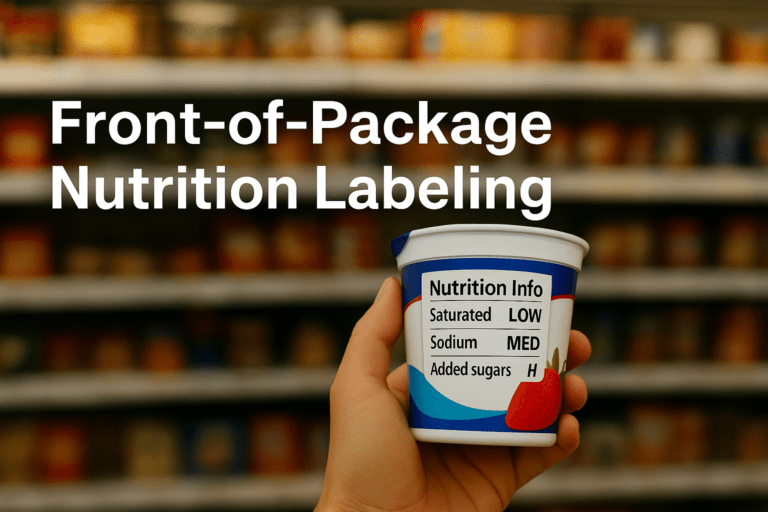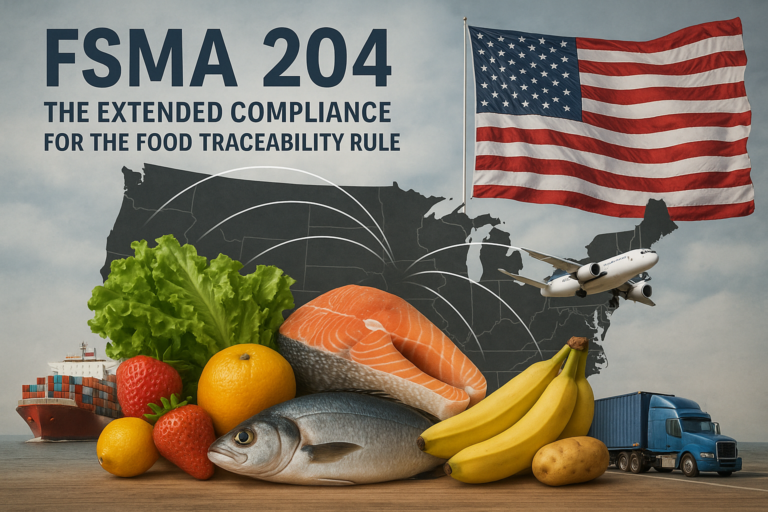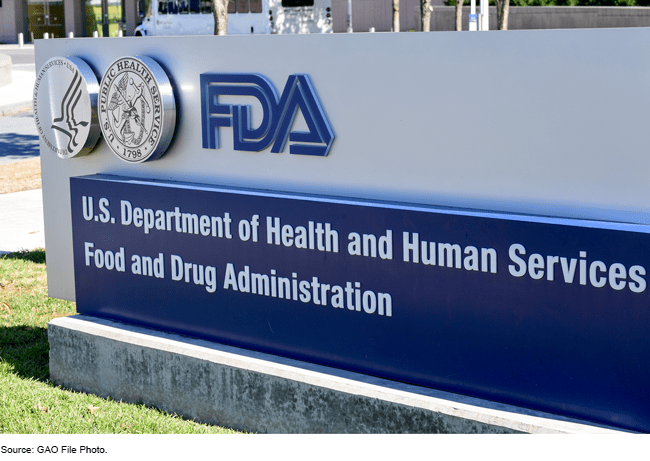The FDA Food Safety Modernization Act (FSMA) is transforming the way we manage food safety in the United States. One of its cornerstone regulations, the Final Rule for Preventive Controls for Animal Food, was published on September 17, 2015. Now fully implemented, this rule ensures that animal food is produced, processed, and handled under conditions that prevent contamination and promote safety—protecting both animal and human health.
Current Status
All compliance dates for this rule have now passed:
- Larger animal food facilities have been required to comply with Current Good Manufacturing Practices (CGMPs) since September 19, 2016, and with preventive controls since September 18, 2017.
- Small businesses began meeting CGMPs in September 2017, and implemented preventive controls by September 17, 2018.
- Very small businesses had until September 17, 2019, to implement CGMPs, with earlier requirements for documenting their business status (by January 1, 2017).
What Does the Rule Require?
- Implementation of cGMPs for Animal Food
All covered facilities must follow Current Good Manufacturing Practices designed specifically for the animal food industry. These practices are flexible and scalable to accommodate a wide variety of facilities.
Key points include:
- Human food processors that supply by-products (e.g., wet spent grains, peels, whey) for animal food only need to prevent food safety hazards and contamination (e.g., no trash or chemicals in by-product containers) and do not need to implement full animal food cGMPs unless they further process the by-products.
- If further processing is done (e.g., drying or pelleting), cGMPs apply. Facilities can choose to follow either human or animal food cGMPs, but must perform a hazard analysis unless exempt.
- Hazard Analysis and Risk-Based Preventive Controls (HARPC)
Every facility must have a written food safety plan that identifies and controls known or foreseeable hazards. This plan must include:
- Hazard Analysis:
- Facilities must consider biological, chemical, and physical hazards, whether naturally occurring, unintentionally introduced, or intentionally introduced for economic reasons.
- If any hazard requires a preventive control, the facility must establish and implement appropriate controls.
- Preventive Controls:
These are measures tailored to the specific risks in the facility’s operations. Categories include:
- Process Controls: Managing cooking, refrigeration, acidification, etc.
- Sanitation Controls: Ensuring cleanliness to avoid contamination by pathogens or personnel.
- Other Controls: Any control not covered above but necessary to reduce risks.
- Management Components:
To ensure effectiveness, facilities must include:
- Monitoring: Confirming controls are consistently applied (e.g., temperature checks).
- Corrections: Quick fixes for minor, isolated issues.
- Corrective Actions: Broader actions for systemic issues, including preventing unsafe food from entering commerce.
- Verification: Confirming that controls work as intended—may include validation studies, instrument calibration, and record reviews.
⚠️ Environmental monitoring and product testing may be required depending on the nature of the hazard and control.
- Recall Plan:
Any facility with a hazard requiring a preventive control must maintain a written recall plan.
- Supply-Chain Program (When Needed)
If a facility identifies a hazard that requires control outside of its own operations, it must implement a supply-chain program.
Requirements include:
- Only purchasing from approved suppliers, or temporarily from unapproved ones after verifying safety.
- Reviewing suppliers based on their food safety performance, hazard analyses, and control capabilities.
- Verification activities (e.g., audits, testing) can be outsourced (e.g., to brokers), but the receiving facility is responsible for reviewing and validating the documentation.
- Definition of a ‘Farm’ and Its Impact on the Preventive Controls for Animal Food Rule
The term “farm” includes two types of operations: Primary Production Farms and Secondary Activities Farms. Operations that meet either definition are not subject to the FDA’s Preventive Controls for Animal Food rule.
Primary Production Farm
A Primary Production Farm is an operation under single management located in one general area (the land doesn’t have to be connected) that is involved in:
- Growing crops
- Harvesting crops
- Raising animals (including seafood)
- Or any combination of the above activities
These farms are allowed to pack or hold raw agricultural commodities (food in its raw or natural state) grown on farms managed by someone else. Businesses that only harvest crops are also considered farms under this definition.
Importantly, farms that raise animals are not subject to the Preventive Controls for Animal Food rule. However, feed mills related to animal farming may or may not be exempt, depending on their structure.
Examples:
- If a beef cattle farm also owns a feed mill:
- The feed mill is considered part of the farm and exempt from the rule if:
- It is managed by the same company or farm,
- It is in the same general location,
- And it only makes feed for animals on that farm or others under the same management.
- The feed mill is considered part of the farm and exempt from the rule if:
- If a poultry processing company owns a feed mill but hires an independent farmer to raise the poultry:
- The feed mill is not considered part of a farm and is subject to the rule because it makes animal food for a farm not under the same management.
Secondary Activities Farm
This type of farm:
- Is located somewhere other than a Primary Production Farm
- Is involved in harvesting, packing, or holding raw agricultural commodities
- Must be majority-owned by the Primary Production Farm(s) that supply most of the commodities it handles
This secondary activities farm definition is mostly relevant to plant-based commodities like grain, and rarely applies to animal food, except in limited cases like grain storage or handling.
- Feed mills that are part of farms (vertically integrated operations) are not covered by the Preventive Controls for Animal Food rule.
Feed mills integrated within a farm (i.e., same management, location, and for use on the same farm) are not currently subject to the Preventive Controls for Animal Food final rule. Preventive Controls for Animal Food final rule. The FDA remains concerned that not having these feed mills subject to the Preventive Controls for Animal Food final rule leaves a gap in the protection of human and animal health because these feed mills manufacture significant amounts of animal food.
The FDA plans to propose future rules that may require these feed mills to implement at least cGMPs established by the Preventive Controls for Animal Food rule, even if they are currently exempt.
Compliance Dates by Business Size
Business Size | CGMP Compliance | Preventive Controls Compliance |
Large (non-small/very small) | Sept. 19, 2016 | Sept. 18, 2017 |
Small (<500 employees) | Sept. 18, 2017 | Sept. 17, 2018 |
Very Small (<$2.5M in avg. annual sales) | Sept. 17, 2018 | Sept. 17, 2019 (records by Jan. 1, 2017) |
Final Thoughts
The FSMA Preventive Controls for Animal Food rule is a vital step forward in protecting the safety of animal food, which in turn supports public health. Whether you operate a small feed facility, a multinational manufacturing plant, or are part of a vertically integrated farm, understanding your obligations under this rule is essential for compliance and safety.
Source: United States Food and Drug Administration (FDA)
Reach out to Fresh Group Food Safety And Quality Consulting for any inquiries related to food quality and safety.
